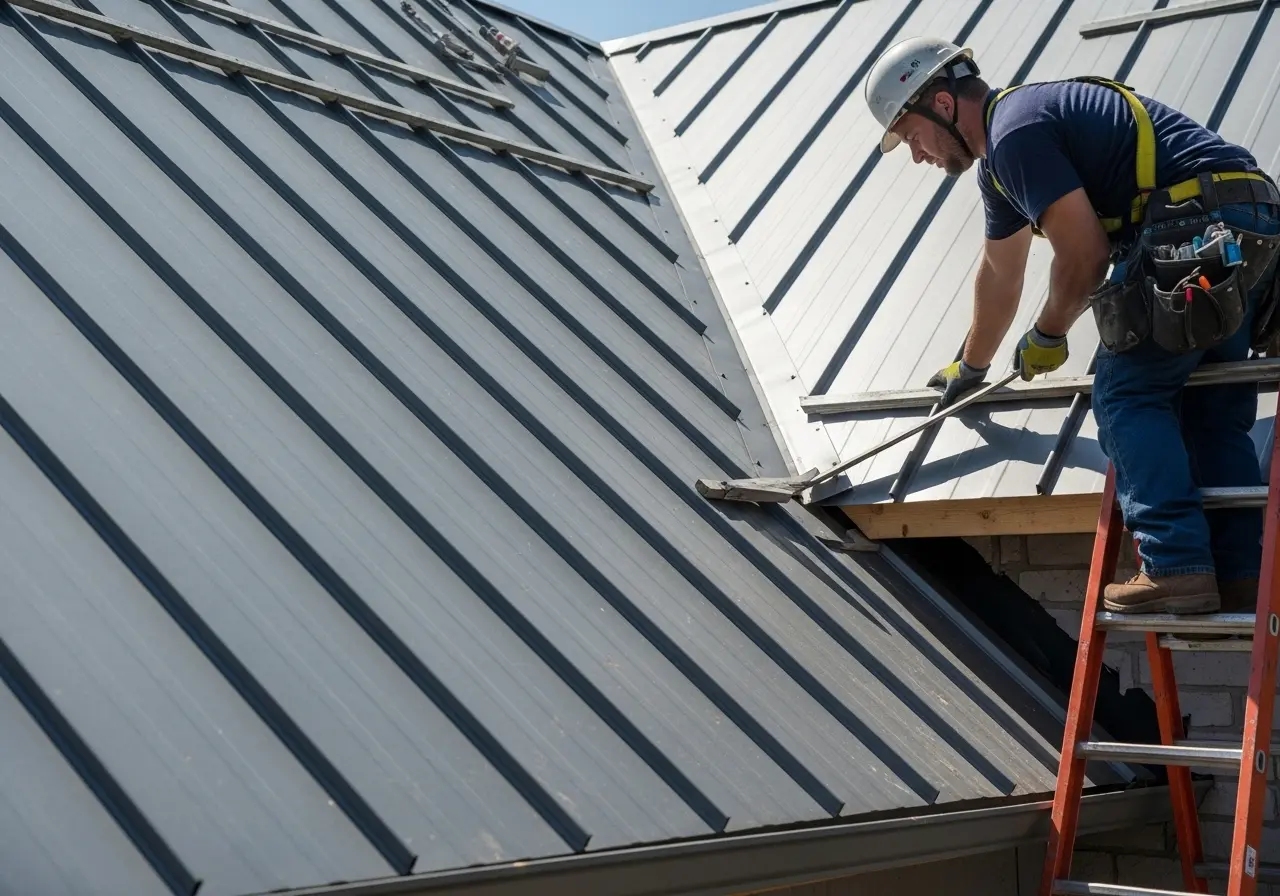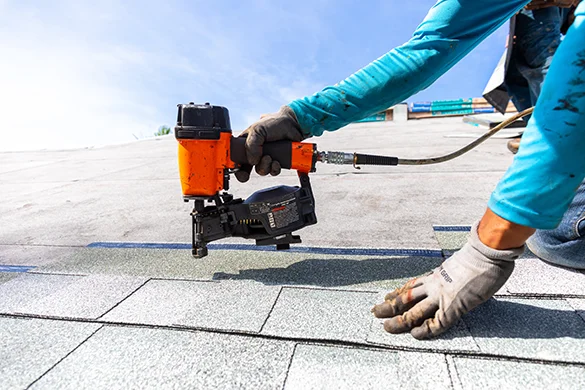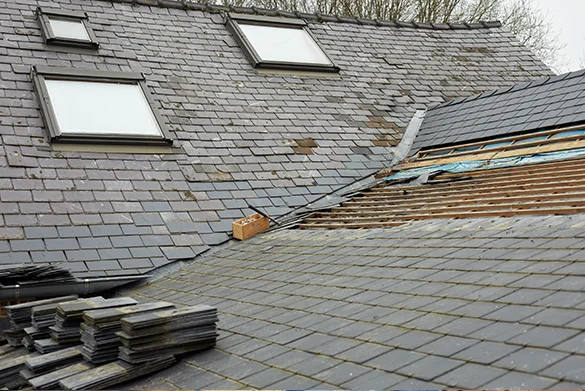Metal Roofing Screws 101: How Proper Fasteners Ensure a Secure Roof
Metal roofing screws represent the critical connection point between your roof panels and the structure beneath—yet they're often the most misunderstood component of metal roof installations. Using incorrect fasteners or improper installation techniques causes more metal roof failures than any other factor. This comprehensive guide explains how professional-grade metal roofing screws, proper placement, and correct installation techniques ensure your Northern Virginia metal roof delivers the 50+ year service life these systems are known for.
Why Metal Roofing Screws Matter More Than You Think
A typical residential metal roof installation uses 80-120 screws per square (100 square feet), meaning a 2,000-square-foot home requires 1,600-2,400 individual fastener penetrations through your roof. Each screw creates a potential leak point if improperly selected or installed. The difference between a metal roof that lasts five decades and one that fails within ten years often comes down to fastener choice and installation quality.
Metal roofing screws must accomplish three critical functions simultaneously: provide structural attachment capable of resisting wind uplift forces, create a watertight seal at every penetration point, and maintain these properties through extreme temperature swings and UV exposure for decades. Cheap or incorrectly specified fasteners fail at one or more of these requirements, leading to leaks, panel blow-off during storms, or premature system deterioration.
Understanding proper metal roofing techniques requires recognizing that fasteners aren't just screws—they're engineered systems designed for specific applications. Using deck screws or general construction fasteners on metal roofs creates guaranteed failure points.

Anatomy of Professional Metal Roofing Screws
Quality metal roofing screws feature specialized design elements that separate them from ordinary fasteners. The screw shaft must be manufactured from hardened steel capable of drilling through metal panels and wood or metal purlins without stripping, bending, or breaking. Most professional-grade screws use #12 or #14 gauge steel with a self-drilling point that eliminates the need for pre-drilling.
The washer assembly represents the most critical component. EPDM rubber washers bonded to steel backup washers create the waterproof seal at each fastener penetration. When compressed properly during installation, the EPDM rubber conforms to the metal panel profile and forms a gasket that prevents water intrusion. Cheap fasteners use neoprene or other inferior rubber compounds that degrade rapidly under UV exposure, causing leaks within just a few years.
Corrosion-resistant coatings protect the screw from rust that would otherwise compromise structural integrity and stain roof surfaces. Most professional metal roofing installations use screws with ceramic or polymer coatings that match the roof panel color. These coatings provide superior corrosion resistance compared to basic galvanization while maintaining aesthetic appeal. Exposed fastener roofs in Northern Virginia's humid climate demand premium coatings to prevent the rust staining that mars many DIY metal roof installations.
Screw Types for Different Metal Roofing Applications
Exposed fastener metal roofing systems—including corrugated panels and most metal shingle products—use screws that penetrate through panel faces directly into structural decking. These installations require #12 x 1-inch screws for panels installed over solid decking, or #12 x 1½-inch screws when panels attach through foam insulation or over strapping.
Standing seam metal roofing systems use concealed clip fasteners that allow thermal expansion and contraction without stressing the screws. The screws attach clips to the roof deck, then panels snap or seam onto these clips. This hidden fastener approach eliminates penetrations through the water-shedding surface, dramatically improving leak resistance and longevity compared to exposed fastener systems.
Metal panel fasteners differ for wood substrates versus metal purlins. Wood-to-metal screws feature aggressive thread patterns designed for maximum pull-out resistance in lumber. Metal-to-metal applications (common in commercial construction) use self-tapping screws with finer thread pitch optimized for threading into steel framing members. Using wood screws on metal substrates, or vice versa, reduces holding power by 40-60%, creating dangerous wind uplift vulnerability. For comprehensive metal roofing information, see our guide on metal roofs in Falls Church VA.

Proper Screw Placement Patterns
Fastener placement patterns vary by panel profile, roof pitch, and exposure conditions, but fundamental principles remain constant. Screws must penetrate through the raised ribs (high points) of corrugated panels—never through the valleys where water collects. This counterintuitive placement seems wrong to DIYers who assume valley placement would seal better, but rib placement ensures screws compress washers against flat metal while avoiding standing water exposure.
Standard spacing calls for screws every 12-18 inches along panel ribs, with closer spacing (8-12 inches) along panel edges, gables, eaves, and ridges where wind forces concentrate. Northern Virginia's wind exposure zones often require enhanced fastener schedules exceeding minimum code requirements. Roof edges particularly vulnerable to uplift may need screws every 6 inches to resist storm forces.
Overlap areas where panels join require screws through both layers to prevent gap opening during wind events. Side-lap fasteners typically space 12-24 inches apart depending on panel profile and manufacturer specifications. End-lap connections where panels overlap vertically need special attention with fasteners in each rib passing through both panel layers. Skipping these critical fastener locations creates wind channels that can peel panels off during severe weather.
Installation Technique Makes or Breaks Performance
Proper screw installation requires calibrated installation equipment—specifically, screw guns with adjustable depth/torque settings. Over-tightening compresses the EPDM washer excessively, causing it to squeeze out from under the metal backup washer. This creates immediate leak paths and causes premature washer degradation. Under-tightening leaves gaps between washer and panel, allowing water intrusion and potential panel movement under wind loading.
Correct installation seats the metal backup washer firmly against the panel surface with slight EPDM compression visible around the washer perimeter. The EPDM should bulge slightly but remain fully under the steel washer. Achieving this "just right" compression across hundreds of screws demands tools, experience, and attention to detail that separates professional installations from DIY attempts.
Screw angle matters significantly. Fasteners must enter perpendicular to the panel surface—not at angles. Angled screws create oval penetration holes larger than the screw shaft, providing direct leak paths past the washer seal. They also reduce pull-out resistance and create stress concentration points where screws can work loose over time. Understanding common leak repair mistakes includes recognizing poor fastener installation techniques.

Color-Matching and Aesthetic Considerations
Professional metal roof installations use screws color-matched to panel finishes. While functionally identical to standard metallic screws, color-matched fasteners virtually disappear against panels, maintaining clean appearance that highlights the roof rather than its attachment system. Most manufacturers offer screw heads in 20-30 standard metal roofing colors plus custom-match options for unique finishes.
The aesthetic choice matters more than many homeowners initially realize. A quality metal roof represents a 50-year investment in your Northern Virginia home's protection and curb appeal. Thousands of bright metallic screws dotting a dark panel surface destroy the sleek, modern appearance metal roofing provides. Color-matched fasteners cost marginally more but preserve the architectural statement that attracted you to metal roofing originally.
Screw Quality Impacts Long-Term Costs
The price difference between budget and professional-grade metal roofing screws seems significant per fastener—typically 15-25 cents versus 6-10 cents. For a 2,000-square-foot roof using 2,000 screws, choosing premium fasteners adds $200-300 to material costs. However, this modest upcharge prevents failures that cost thousands in leak repairs, panel replacement, and interior damage remediation.
Cheap screws often use inferior EPDM formulations that harden and crack within 5-10 years, creating widespread leak points across the entire roof. Replacing failed fasteners requires removing and reinstalling panels—work that easily exceeds $5,000-10,000 for typical residential roofs. The economics clearly favor using quality screws initially rather than gambling on cheap alternatives.
Professional roofing contractors factor fastener quality into their reputations. Callbacks for leak repairs damage customer relationships and profitability more than any other issue. This is why reputable installers spec premium screws despite price pressure—they understand long-term performance trumps short-term material savings. Homeowners should apply the same logic, recognizing that fastener choice significantly impacts whether their metal roofing investment achieves expected longevity.
Maintenance and Inspection of Roofing Screws
Even professionally installed metal roofing screws benefit from periodic inspection and maintenance. Northern Virginia's temperature extremes cause thermal cycling that can work fasteners loose over years of expansion and contraction. Annual visual inspections identify obvious problems like missing screws, rust staining, raised screw heads, or visible washer deterioration.
Look for screws that appear to sit higher than surrounding fasteners—this indicates backing out from wood substrates, compromising both water seal and structural attachment. Rust staining around screw heads signals washer failure or coating breakdown requiring attention before leaks develop. Any missing screws should be replaced immediately using matching fasteners installed in the original holes or slightly offset if original holes have enlarged.
Re-tightening loose screws requires caution. Over-tightening aged EPDM washers can cause them to split or squeeze out from under backup washers. If screws spin freely without tightening, the substrate has lost holding power and screws need replacement with longer fasteners that engage fresh wood. For persistent problems or widespread fastener issues, consulting professionals who understand comprehensive roof leak repair prevents minor maintenance from becoming major reconstruction projects.
Professional Installation Versus DIY Fastening
While metal roofing installation appears straightforward to many DIY enthusiasts, proper fastening technique represents the critical skill separating successful projects from expensive failures. Professional installers invest in pneumatic screw guns with precise depth control, maintain calibrated torque settings for different panel profiles, and draw from experience installing hundreds of thousands of screws correctly.
DIY installers working with standard drills or impact drivers struggle to achieve consistent fastener depth across large roof areas. Hand-tightening provides feel but lacks consistency and speed for whole-roof applications. The learning curve for proper fastening technique often spans the entire first roof project—meaning your home becomes the training ground where mistakes get made and later require expensive corrections.
Complex roof geometries with multiple penetrations, transitions between materials, and challenging fastening locations further complicate DIY attempts. Chimney flashings, valley treatments, ridge caps, and rake edge details all require modified fastening patterns and specialized techniques. Our guide comparing roofing specialists versus DIY approaches explores when professional expertise provides better value than sweat equity. For metal roofing specifically, fastener installation quality often justifies professional installation costs through superior long-term performance.
Professional Metal Roofing Installation in Northern Virginia
Get expert metal roof installation with properly specified fasteners and professional installation techniques that ensure decades of leak-free performance.
Schedule Your Consultation